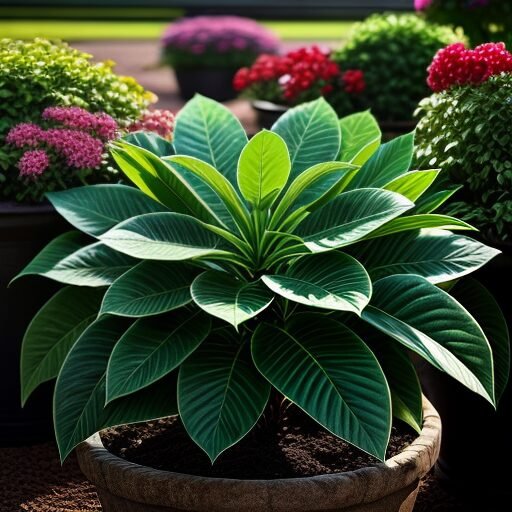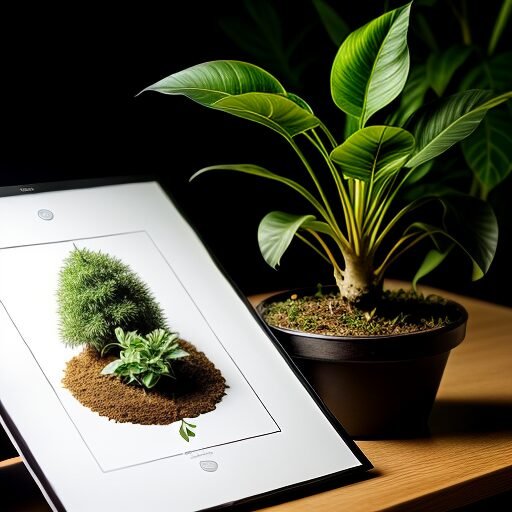Discover the Future of Sustainable Food
Transform your space with a food forest garden
Explore how food forest gardens can revolutionize urban food systems by creating sustainable, resilient ecosystems right in your backyard.
Let’s talk about somethin’ real important. We’re livin’ in a world where food prices are sky high, and it seems like there’s a new food scandal every other day. It’s gettin’ to where we’re just fixin’ to eat whatever we can find without thinkin’ too much about it.
In urban food deserts, folks are stuck with nothin’ but fast food, processed snacks, and sugary drinks. But don’t you worry, ’cause a new wave of green revolution is comin’ your way, and it’s all about them food forest gardens.
Understanding food forest gardens
Y’all, a food forest garden ain’t just any ol’ garden; it’s like a symphony of nature, a lush oasis that mimics the layers of the forest, from the tall canopy to the humble forest floor with its ground coverin’ plants. This garden design incorporates ecological and sustainable principles for future generations, makin’ it perfect for folks to live a little greener.
By integratin’ trees, shrubs, herbs, and ground cover, these gardens promote biodiversity and sustainability, just like the natural forests. They utilize ecological principles to create a harmonious environment where plants support each other, reducin’ the need for artificial inputs like pesticides and fertilizers. This approach not only supports environmental health but also offers a sustainable solution to food security challenges in urban areas like Clarksville or wherever you might live in the world.
Food forest gardens are designed to be low maintenance, requirin’ minimal water and labor while providin’ a rich diversity of food and habitat for wildlife. They’re inspired by the natural structure of forests, incorporatin’ multiple layers from canopy to ground cover. This design supports a diverse range of plant species that work together to enhance soil health and nutrient cycling. By mimickin’ natural ecosystems, food forest gardens create a balanced environment that fosters resilience and productivity.
Instead of plantin’ rows of the same crop, let’s focus on connectin’ plants that serve multiple purposes and support each other. Think about fruit trees like peaches and apples, nut trees like pecans and walnuts, bushes like American Beautyberry, veggies, herbs, and grapevines all workin’ together in harmony to create a diverse and resilient ecosystem. This is the kind of garden that’ll make your yard a haven for local wildlife and a source of fresh, healthy food for your family.
In Clarksville, there is nitiatives like the healthy yards program that encourage people to plant native species and reduce chemical use, makin’ the community a better place for everyone. So, if you’re lookin’ to start your own food forest garden, consider visitin’ local spots like Austin Peay State University‘s native meadowor checkin’ out the native plant sales they host. With a little bit of ingenuity and a lot of heart, we can turn our yards into thriving ecosystems that benefit both people and the environment.
Key features of food forest gardens
Nutrient cycling
These gardens efficiently recycle nutrients through natural processes, minimizing waste and supporting plant growth.
Climate resilience
Forest gardens help mitigate climate change by sequestering carbon and reducing greenhouse gas emissions.
Biodiversity
Forest gardens support a wide variety of plant and animal species, creating a vibrant balanced ecosystem that enhances resilience and productivity.
Soil health
By incorporating diverse plant species, forest gardens improve soil structure and fertility, reducing the need for chemical fertilizers.
The beauty of food forest gardens
The beauty of a forest garden lies in its simplicity. You don’t need a big ol’ property; even a small yard can be turned into a forest garden pretty easily. It’s about plantin’ a variety of perennial food producin’ plants that not only give you nutritious and delicious food but also support the environment and pollinators.
Food forest gardens emphasize ecological principles like biodiversity, soil health, and nutrient cycling. By incorporatin’ these principles, food forest gardens create a food production system with lower maintenance that requires less water, fewer pesticides, and less labor than traditional farmin’ methods.
Benefits beyond food and community connections
But the benefits of forest gardens don’t stop there. They also help mitigate climate change by sequesterin’ carbon, reducin’ greenhouse gas emissions, and promotin’ biodiversity in our urban cores. Forest gardens can even improve air and water quality, reduce stormwater runoff, and provide habitats for wildlife in our cities.
So next time you’re feelin’ down about the lack of fresh produce in your area, just remember that a forest garden is just a shovel and a seed away.
With a little creativity and a whole lotta love, you can turn your backyard into a lush oasis that provides healthy, affordable, and delicious food for you and your family.
Join the green revolution and help create a more sustainable and equitable food system for everyone, one forest garden at a time!
Imagine a future where your grocery bills shrink when you enjoy the free or low-cost bounty from your own forest garden.
But forest gardens aren’t just about the food they produce; they’re also about community. When you care for your trees, you’ll foster social connections and a shared sense of responsibility, creatin’ a space where neighbors can gather, learn, and grow together.
This sense of shared ownership and stewardship will help cultivate the next generation of garden masters, ensurin’ that our planet’s green legacy continues for generations to come.
And the best part? You don’t need to plant a whole food forest garden to make a difference. Start small with just one fruit tree or a few plants, and watch your backyard transform into a livin’ ecosystem.
If you’re not ready to take on the full responsibility of a food forest garden, you can always support the environment by takin’ care of the trees around you.
Starting your forest garden
Embarking on a forest garden journey is an exciting way to contribute to sustainability.
Begin with a plan
Start by assessing your space and planning your garden layout. Consider the sunlight, soil type, and water availability.
Select your plants
Choose a diverse mix of plants, including fruit trees, shrubs, and ground covers, that will thrive in your environment.
Prepare the soil
Enhance soil health by adding organic matter and ensuring proper drainage to support plant growth.
Plant and nurture
Plant your selections carefully, and provide regular care and maintenance to encourage a thriving ecosystem.
Join the green revolution today
If you found this post interestin’ and wanna learn more, keep an eye out for our upcoming posts on this excitin’ topic. You’ll get to discover more secrets of food forest gardens and find out how you can make a difference in your own backyard, one plant at a time, buildin’ healthier, more sustainable communities.
Tidde n Fidde




